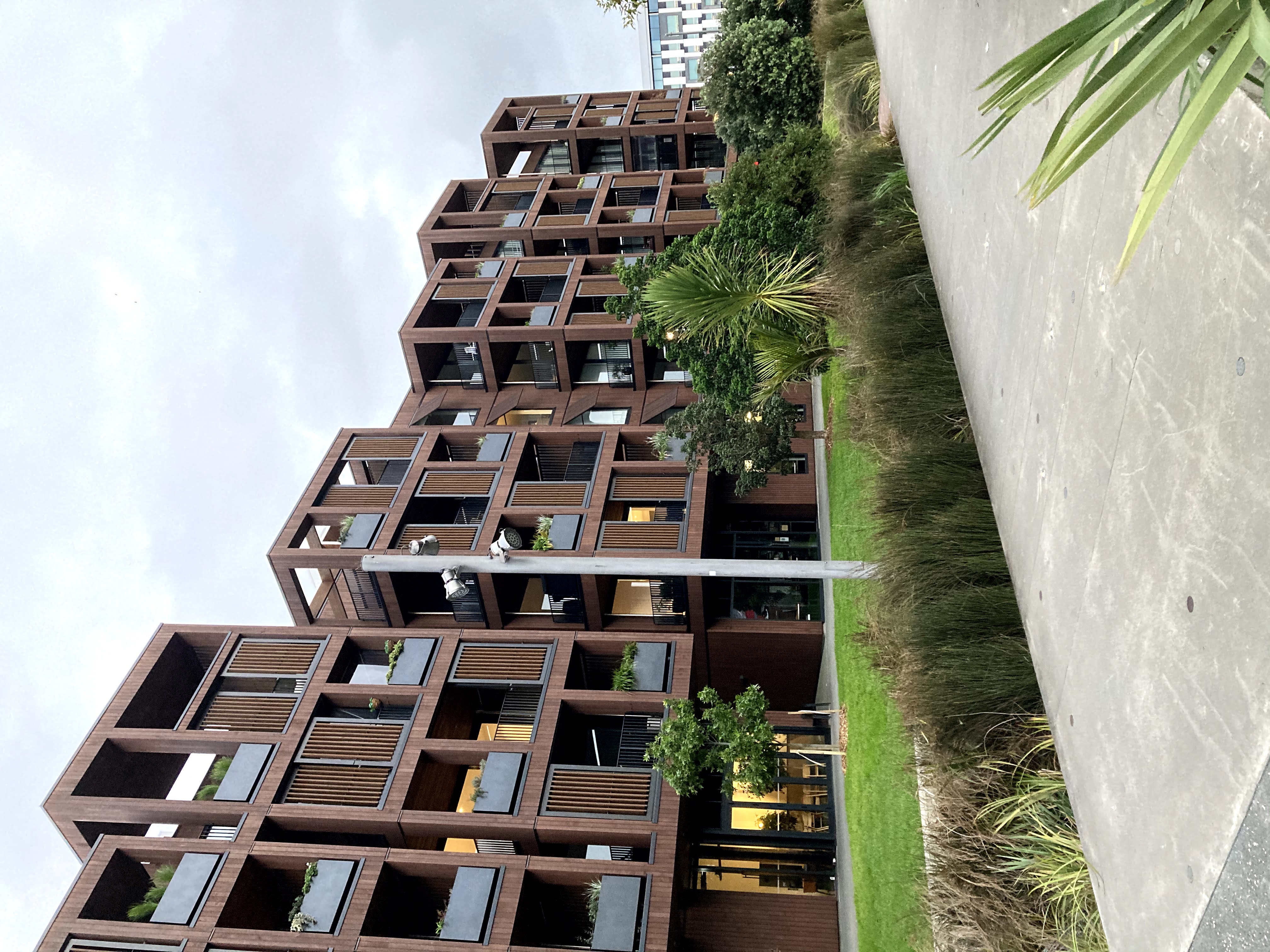Why density is critical for our future
Wed, June 29, 2022 | HousingThis article by Malcolm McCracken was originally published in the Wellington Regional Leadership Committee e-news.
The past two years have seen a significant shift in central government policy to intervene in land supply for intensification with the National Policy Statement on Urban Development (NPS-UD) and the Medium Density Residential Standards. While media discussion around these changes has focused on housing affordability, these moves are essential for many other reasons. We should view enabling density as an opportunity to improve our town and cities.
Density is essential to unlocking the vision of complete neighbourhoods and climate action
You may be familiar with "15-minute cities", "complete neighbourhoods", or perhaps another name. These concepts focus on enabling people to access daily needs by sustainable transport modes of walking, cycling, micro-mobility, and public transport. In doing so, we can reduce emissions from driving, improve equity of access to opportunities and create more vibrant and thriving neighbourhoods and communities. Crucially this is enabled through proximity to the services. If you have to bike for 30 minutes to a new shopping centre on the edge of the city, few will do so. If we have more small-scale grocery stores and speciality shops within our neighbourhoods, walking or biking to pick up a few bits for lunch and dinner becomes much more manageable.
The Emissions Reduction Plan has set a target of reducing Vehicle Kilometres Travelled (VKT) by light vehicles by 20% by 2035. Crucially, the plan states we need to do this by enabling a shift to walking, cycling, and enabling access to daily needs by these modes, allowing us to reduce the distance we drive.
Density comes into the picture by enabling more local shops and services to exist in the places people live. For decades, we have separated uses, to the detriment of our cities, by increasing the distances we are forced to travel. A return to greater mixed-use development through changes to our district plans is crucial climate action, to reduce the distances we must travel.
Density is central to housing affordability and choice
The housing crisis has many components, from poor rental conditions and shocking housing stock to outrageous rents and house prices. The scale of reform required goes beyond a series of plan changes, but it does provide an opportunity to enable a future centred around housing choice.
Housing choice means choice in terms of typology, size, location, and tenure. A range of typologies and sizes is important for offering homes for different stages of people's lives. A three- to four-bedroom, standalone home doesn't suit most people's needs, yet this typology makes up almost all we have built-in recent decades.

Having a range of sizes allows for "ageing in place", where someone can remain in the same community throughout different stages of their life. Smaller apartments can suit the needs of young professionals, adults without children and for later stages in life. Larger apartments and mid-sized townhouses can suit small families, while larger townhouses, duplexes and standalone homes can suit larger and multi-generational families. We also need to work to reduce barriers to urban papākainga and cohousing. Allowing this range across our towns and cities is vital to creating stronger, more diverse, and vibrant communities.
It is important to remember that land typically makes up most of the cost of housing in major cities, reflecting the significant demand. By enabling greater density reflective of the land prices, the cost of that land can then be split amongst more units, lowering the price of each unit.
Density is essential to building and protecting many excellent aspects of the Wairarapa-Wellington-Horowhenua region
The Wairarapa-Wellington-Horowhenua region is a fantastic region of diverse cities, towns and neighbourhoods. Access to open space through regional parks, the green belt, and stunning coastal environments are just some of the highlights. Density protects all of this against further sprawl and the resulting congestion.
This region has traditionally been an attractive place for young people as a thriving cultural hub with live music and sport, the arts scene, and nightlife. However, housing affordability and good transport are equally as important as a major city's hustle and bustle when deciding where to live. With this in mind, our regions ability to attract and retain talent is severely limited by the region's lack of more affordable housing. Why would someone pay a fortune to live in this region when they could earn more, have cheaper housing, and live in an international city with more vibrancy and opportunities?
So, what does this change look like?
Over time streets and neighbourhoods must change, with greater density, through a range of standalone homes, townhouses, and apartments. This will likely be incremental, with most streets only seeing a few developments in the next decade. Communities will grow, evolve, and become more diverse. To support this, it is local government's responsibility to ensure community facilities, public spaces, and green streets make our region an attractive place to live, work and invest. We also need to enable more mixed-use development to support a revival of corner stores, more home businesses, neighbourhood cafés and third places.
Most people are cautious about this change, and rightly so. There have been some poor outcomes with historical attempts at density. However, there are many benefits and opportunities from this change. The challenge is how we retrofit quality density within existing neighbourhoods.
In Part Two of this series, I will introduce the key elements of density done well and challenge you to think about what this means for this regions future.
See Part Two of this series here.